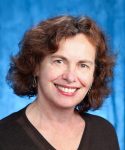High Holiday Memories

Every September, I was the envy of my Casimir Pulaski Elementary School classmates, many of whom had never known a Jew before. While everyone anticipated the December break, I, alone, was absent for Rosh Hashanah and again for Yom Kippur.
On arriving in America, my parents moved to an immigrant Polish neighborhood on the near north side of Chicago, where they believed they could earn a living for their four children. Thus, my mother and father’s America was the familiar accents of Milwaukee Avenue, a mini-Warsaw of kielbasa eating-blue-collared laborers and bundle-shlepping babushkad-women.
For me, America was “Ozzie and Harriet” and “Father Knows Best.” The Nelsons and Andersons were my mentors. Attired in high heels and frilly aprons, the ever-perky Harriet and Margaret listened seriously to their children. They never “pooh, poohed” against the evil eye, and they served the cottony white bread I desired, not rye with seeds. Plus, the church television families attended bore no resemblance to our chaotic synagogue.
The high holidays challenged me. While I was delighted that my friends languished in school when I was free, sitting interminably in synagogue was hardly freedom. Young Jewish families had moved northward years earlier, abandoning the once-bustling urban neighborhood and by the 1950s, our dilapidated shul consisted of elderly stragglers.
Praying was a noisy male affair as each man davened at his own pace, but when the Rabbi goofed, a chorus of corrections chimed in. The women were quiet, reticent, and children’s participation in services was considered nahrishkeit, nonsense. We were expected to be still, and I sat, unaware of even the page number. This was my parents’ New Year.
My television New Year came with streamers, midnight revelry, and sequined, spangled dresses. To be fair, I noticed that both traditions involved countdowns. On television, I watched the countdown to midnight, when champagne corks popped and people kissed madly as I twirled my Purim noise-maker.
The enumeration of sins, which was the Jewish countdown, was less compelling. Since I didn’t understand Hebrew, even vivid sins failed to stir me until I unearthed a prayer book with English translation: then my interest was piqued. Minor transgressions impressed me not, but I savored those I deemed most foul, even when I didn’t understand them. The Sarah Bernhardt in me wholeheartedly embraced the act of breast-beating to each sin. While I waited impatiently for a breast to beat, I pummeled my scrawny chest and envisioned a buxom new year.
The anticipation of the Maskir Neshumas memorial service was especially poignant. My mother would suddenly whisk us children outside as if pursued by demons. We were warned to stay out until she returned for us. In my imagination the souls of our relatives who died in the war took shape inside the sanctuary. Had I snuck inside, I visualized our lost extended family floating aloft like figures in a Chagall painting. However, I stayed put, terrified lest the spirits snatch me away.
We kids passed the time venting energy and exchanging scary stories. When my mother reappeared, she was subdued. I knew she felt sad that she wouldn’t see her family for an entire year. I was grateful when this part was over.
Although our holiday didn’t include the sartorial splendor I admired, food we did have. After services we enjoyed the fruits of my mother’s loving labor. My father made Kiddush, the wine blessing, and we dipped apples into honey for a sweet year. We began with ovals of gefilte fish in aspic crowned by carrot rings, along with horseradish and mounds of challah. I skipped the horseradish, which my brother said would put hair on my chest.
Next we downed massive bowls of handmade egg noodles in dill-flecked golden chicken soup. Then, fork-tender roasted brisket simmered with potatoes, carrots and onions. My mother bustled, constantly serving and clearing. Finally, with waistbands loosened, as we sampled my mother’s sponge cake and fruit compote, she finally sat down to eat. Nothing could follow this meal but a nap.
On returning to school, my friends thought I’d been sick and were perplexed by my family’s peculiar observance. I was twelve when we moved to an area where more Jews lived and it was a relief not to explain myself every holiday.
Decades and countless jars of honey have passed since those years. I still appreciate both new years – the countdowns, the sequins and spangles, the rituals, the food. I’m proud that my holiday menu is the same as my dear mother’s. My parents’ traditions that they learned from their parents have been shared with my children and I like to think that they will do the same with their families. Happy New Year, Shana Tova, and may we all be inscribed in the book of life!
Sara Nuss-Galles has been a commentator on Public Radio’s MarketPlace, and written restaurant reviews, features, humor and a collection of illustrated short stories.





A joy to read. This is a meaningful way to embrace our new year.
Beautiful and eye-opening story. Thanks for sharing!
Elegantly and beautifully told. A true and beautifully detailed depiction of the American immigrant experience.
Sara,
It may have been scrawny but I envisioned it. I chuckled and chuckled – I was on the other end, living in Milwaukee and going to school with the north side Jews and their traditions as different as they were from my Christian traditions. Miss you both.
Wonderful and evocative!
Thank you for sharing your wonder years. We all have lived parts–and your memories warm my heart.